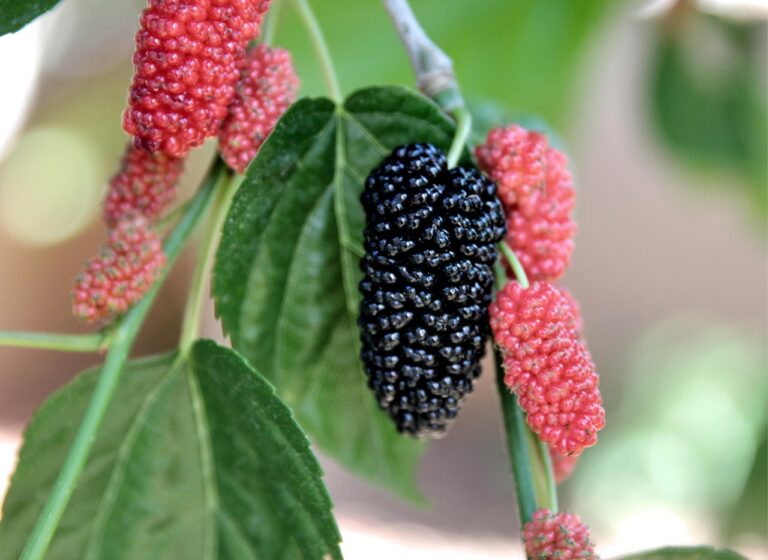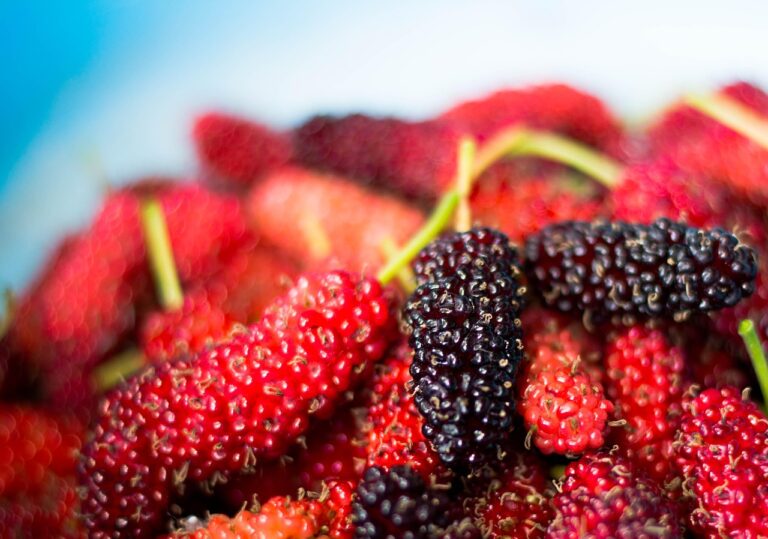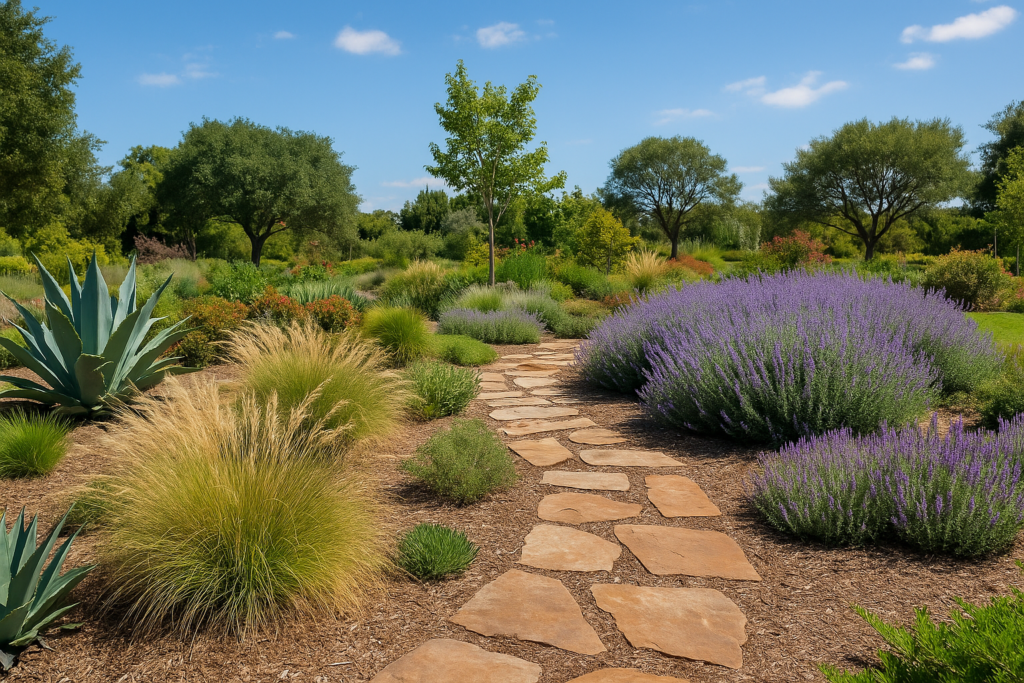Looking for a fast-growing fruit tree that delivers beauty, shade, and delicious berries? The mulberry tree is a great addition to your garden. It’s easy to grow, drought-tolerant once established, and produces sweet, juicy fruit with minimal care.
Why Choose a Mulberry Tree?
- Fast growth: Some varieties can grow over 2 feet per year
- Fruit production: Tasty berries for fresh eating, jams, or smoothies
- Low maintenance: Adaptable to many soil types and climates
- Shade & privacy: Its wide canopy provides great summer coverage

Best Mulberry Tree Varieties
| Variety | USDA Zone | Fruit Color | Notes |
|---|---|---|---|
| Morus alba | 4–9 | White | Sweet, mild flavor |
| Morus nigra | 5–9 | Black | Rich and tart, best flavor |
| Morus rubra | 4–8 | Red | Native to North America |
| Illinois Everbearing | 4–9 | Black | Long fruiting season |
Where and How to Plant a Mulberry Tree
- Sunlight: Full sun (6–8 hours/day)
- Soil: Well-drained, slightly acidic to neutral (pH 6–7)
- Spacing: At least 15–20 feet from structures or other trees
- Planting time: Early spring or fall in mild climates
🛑 Avoid planting near sidewalks or driveways — falling berries can stain surfaces.
Watering, Pruning & Care
- Watering: Weekly during the first year, then only during dry spells
- Mulching: 2–4 inches of mulch helps retain moisture and suppress weeds
- Pruning: Light pruning in late winter to shape and remove dead branches
- Fertilizer: Not required, but compost can boost growth
Protecting the Fruit
Mulberries attract birds. To save your harvest:
- Use bird netting
- Pick berries daily during the harvest season
- Grow a separate tree just for wildlife if space allows

Harvesting & Using Mulberries
- Harvest time: Late spring to midsummer
- Berries are ripe when they’re soft and fall easily from the branch
- Use in: smoothies, jams, fruit salads, pies, or eat fresh!
💡 Pro tip: Lay a sheet under the tree and shake branches gently to collect ripe fruit.
Common Issues
| Problem | Cause | Solution |
|---|---|---|
| Leaf drop | Heat stress or transplant shock | Water deeply and mulch well |
| No fruit | Young tree or poor pollination | Wait or plant another variety nearby |
| Pest damage | Aphids or whiteflies | Use neem oil or insecticidal soap |

🏁 Final Thoughts
Whether you’re creating a productive edible garden or just want a low-maintenance shade tree, the mulberry tree is a top pick. With minimal care, it will reward you with delicious berries and a beautiful canopy for years to come.
Want more low-maintenance options? Check out our post on Walkable Ground Cover Plants for eco-friendly lawn alternatives.
For planting tips and soil preparation, visit our How to Build a Raised Garden Bed tutorial.
Learn more about mulberry tree care from the University of Florida IFAS Extension.

